Exam Scores:
135 Total Points: 104,100,100,99,99,96,86,80,76,73,55
Average = 67% (as expected).
1. What is the fundamental physical assumption that is made when considering the behavior of a parcel of rising air? Argue why this assumption is valid and under what conditions this assumption might be violated.
Most of you did not answer this question all that well but talked a lot about adiabatic stuff (kind of a group think response here). Most responses left out the key piece of physics - the parcel is in pressure equilibrium with the environment. The question is not about adiabtic things and has three key elemental responses:
- Parcels or air are assumed to be in pressure equlibrium with the environment at all times.
- This assumption is mostly valid because the environmental pressure gradient in our atmosphere is small.
- rapid mixing of air, particularly moist air, would invalidate this assumption (and also destroy the parcel)
2. State 3-4 basic assumptions that we make about our atmosphere in order to physically characterize it.
- Thin
- Isothermal over where most of the mass is
- Hydrostatic Equilbrium
- Ideal Gas Law (left out from most)
3. Make a rough sketch and label the components that explain why a planetary surface has a higher equilibrium temperature if it has a thin atmosphere around it.
Basically reproduce this diagram with the key point that the thin slab atmosphere (one zone) heats to a finite temperature and radiates 1/2 of that extra flux (Fa) back to the surface,

4. Explain why the jet stream in the Northern Hemisphere has higher wind speeds in the winter compared to the summer.
Not answered well at all. This is in reference to the Thermal Wind (see below as well as the extra link in the course modules).
In words: the jet stream is a direct result of vertical shear in geostrophic winds induce by a temperture gradient in the horizontal direction (generally NS). The northern hemisphere has a lot of land mass and in the winter there is significant differential temperature between that land mass (colder) and the surface ocean water (warmer) so the temperature gradient is maximized leading to a stronger jet stream.
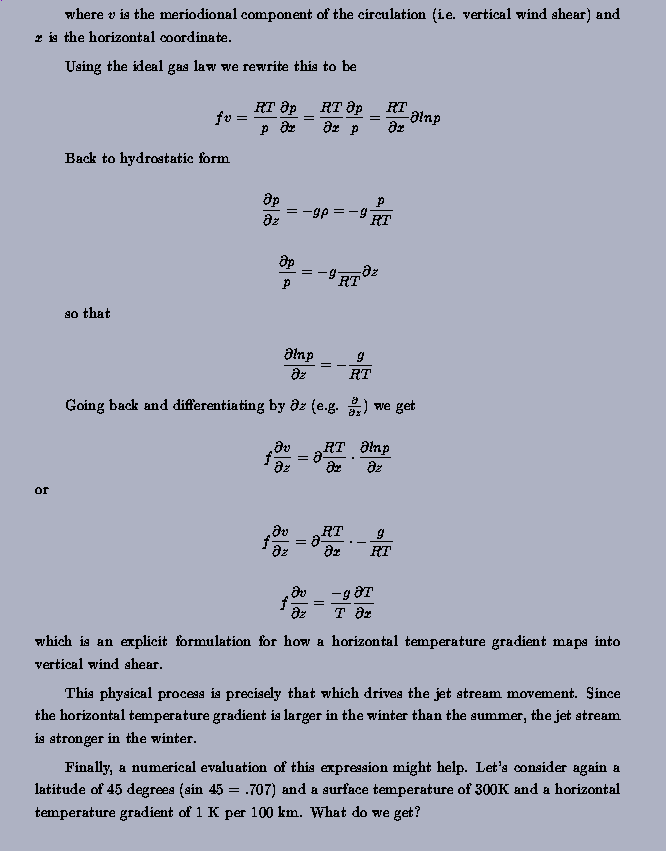
5. Explain some of the physical effects and manifestations associated with the introduction of water vapor into a rising parcel of dry air.
- Produces an change in Entropy of the system
- adds latent heat channel through condensation
- alters the lapse rate to lower values
- adds a partial pressure es to the system
- introduces a mass mixing rate of moist air to dry air
- can produce precipitation
6. What is the physical condition that defines a) the geostrophic wind and b) the cyclonic wind?
The pressure gradient force is balanced by either coriolis driven winds (geostrophic balance) or by circular rotation (cyclonic balance).
 
7. A physics experiment has sent an object to the top of the atmosphere. That object has absorptivity in the optical of 25% and emissivity in the infrared of 80%. Calculate the equilibrium temperature of this object.
Straight forward energy in = energy out.
- Energy in = 1370*.25
- Energy out = 0.8σTeq4
- Solve for T to get T = 295K.
This direct example is in the course material and we did it in class:


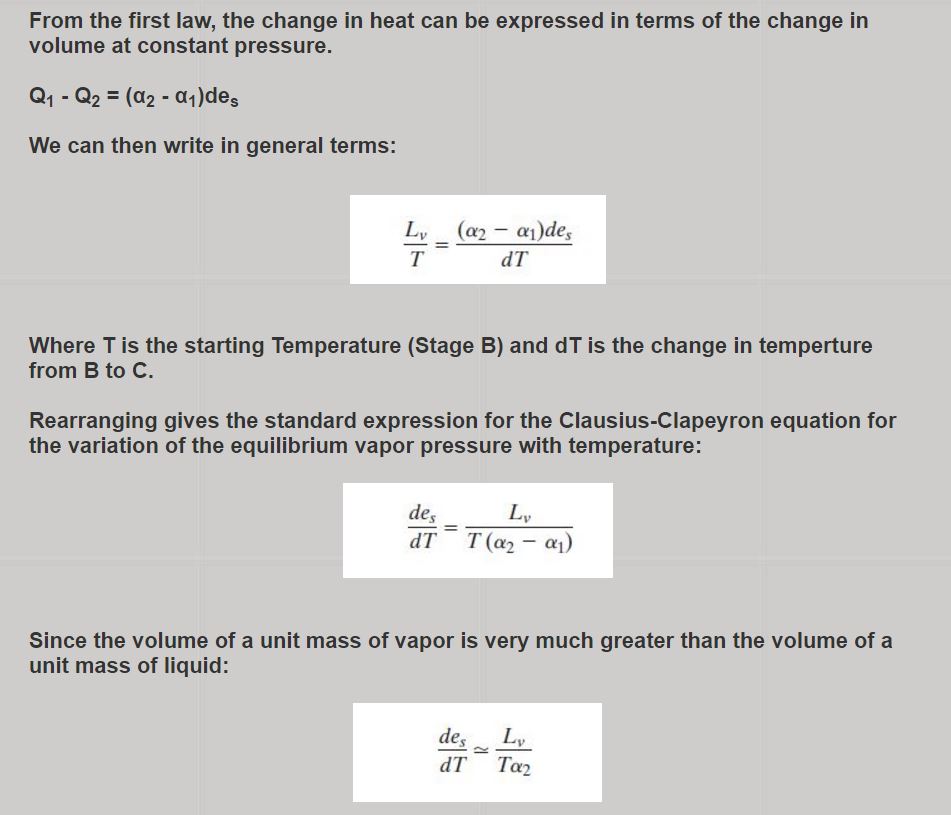
9. Explain the formation and evolution of Rossby Waves and how they determine the local weather at any given location on the planet.

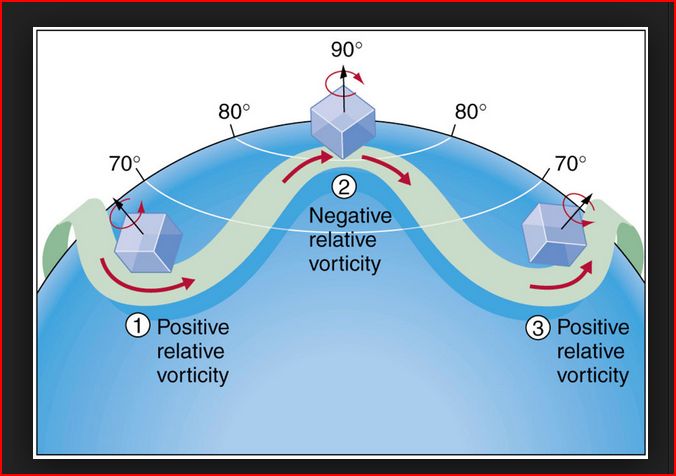 | | When located under a ridge (2) in the figure the stablity time scale is 3-5 days so no rain, warm temps; when located at bottom of a trough, moisture and cool air dumps on you and again the presistence time scale is about 3-5 days |

Combine the ideal gas law and the hydrostatic equation:
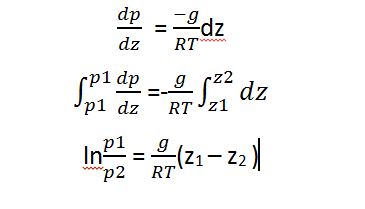
11. Air in the 1000-850 millibar layer receives an incident flux of 100 Watts per square meter. How much does the temperature in this layer increase in one day?
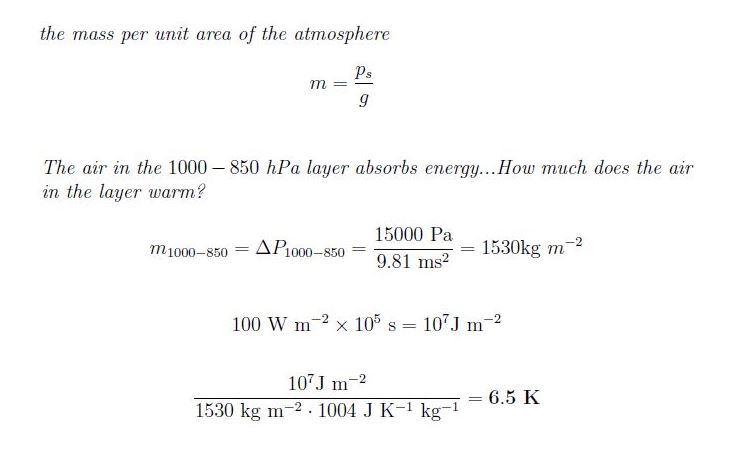
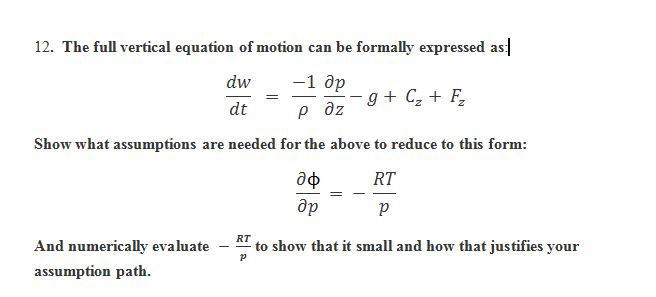
From observations we know that dw/dt is very small so set that to zero. We also know that the C (coriolis) term is zero in the vertical direction (z) and that Fz is similarly small (but not within the first 1/2 km from the surface but that's a detail that we ignore).
- setting those terms to zero recovers hydrostatic equilibrium

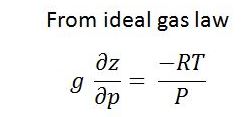
- you were given Φ = gz so g∂z = ∂Φ
- RT/p ~ 287*300/105 which is .84; surface pressure = 1000 mb = 105 pascals. So this simply reconfirms that dw/dt is, in fact, small.
|
